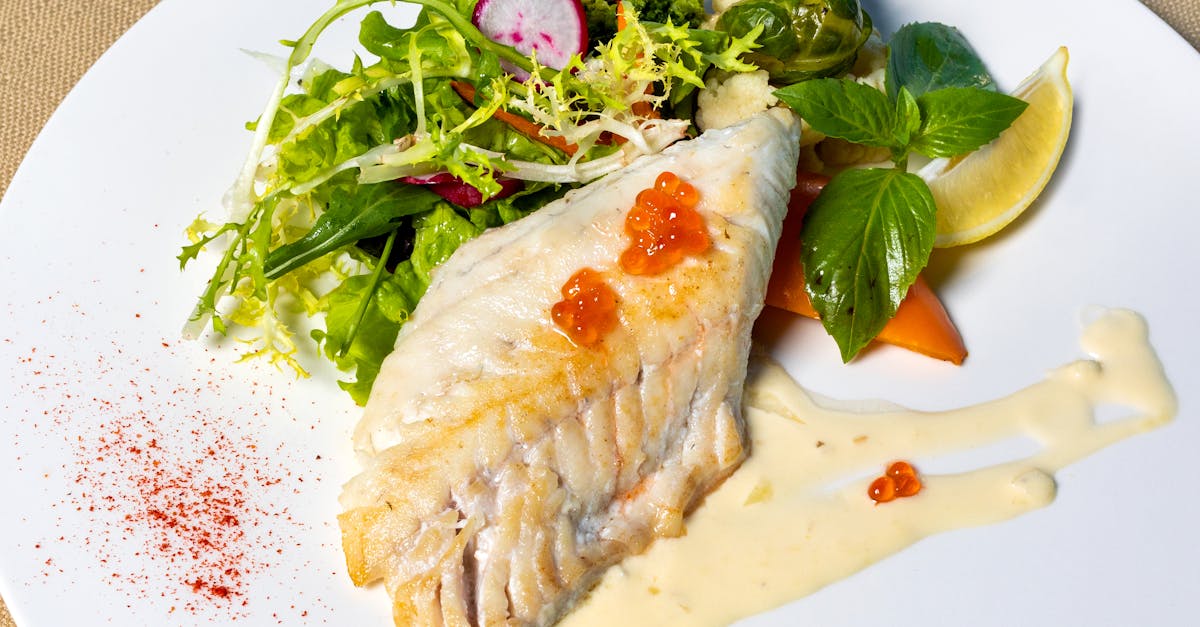What to look for in frozen haddock fillet labels

Nutritional Content
Frozen haddock fillets are a nutritious and versatile choice for many meals. They are low in calories while providing an excellent source of lean protein. This fish is also rich in essential vitamins and minerals, including B vitamins that are crucial for energy metabolism. In addition, haddock contains omega-3 fatty acids, which are beneficial for heart health and overall well-being.
When analysing the nutritional labels, consider the fat content. Haddock typically has a low fat profile, making it a healthier option compared to more fatty fish. Pay attention to sodium levels, especially in pre-seasoned products. Understanding these nutritional aspects allows consumers to make informed choices based on their dietary needs.
Key Nutrients in Haddock Fillets
Haddock fillets are a lean source of protein, making them an excellent choice for those seeking to maintain a healthy diet. A typical serving provides a significant amount of omega-3 fatty acids, important for heart health and cognitive function. In addition to protein and omega-3s, this fish contains essential vitamins and minerals, including B vitamins, particularly B12, which aids in energy production and the formation of red blood cells.
In terms of macro and micronutrients, haddock is low in calories and saturated fats, contributing to its health appeal. Furthermore, this fish is a source of potassium, which supports heart health by helping to control blood pressure. The nutritional profile of haddock makes it a versatile option for various dietary preferences, offering a satisfying meal without excessive calories or unhealthy fats.
Sustainability Practices
When examining frozen haddock fillet labels, it's essential to consider the sourcing practices associated with the product. Responsible fisheries adhere to regulations that promote the sustainability of fish populations and their ecosystems. Certifications from organisations like the Marine Stewardship Council indicate that the fish has been harvested sustainably. If the packaging includes such certifications, it signifies a commitment to environmentally sound practices.
Recognising Environmentally Friendly Labels
When selecting frozen haddock fillets, it's important to look for labels that indicate sustainable fishing practices. Certifications from reputable organisations, such as the Marine Stewardship Council (MSC) or the Aquaculture Stewardship Council (ASC), signify that the seafood has been sourced responsibly. These certifications are granted based on strict environmental criteria, ensuring that the fishery or farm follows methods that protect ocean ecosystems and fish populations.
In addition to certification logos, pay attention to any statements related to the sourcing of the product. Terms like "wild-caught," "sustainably sourced," or "responsibly farmed" can provide extra assurance about the environmental impact of your seafood. Transparency in the supply chain is crucial; look for products that specify where and how the fish was caught or farmed. This information can make it easier to choose options that align with eco-friendly practices.
Cooking Instructions
When preparing frozen haddock, it’s important to ensure proper thawing to maintain the fish’s texture and flavour. The safest method involves transferring the fillet from the freezer to the refrigerator a day before cooking. This allows for gradual thawing. Alternatively, if you're short on time, placing the sealed fillet in a bowl of cold water for approximately an hour can effectively achieve similar results. Avoid using warm water as it may encourage bacterial growth.
Cooking methods can vary based on personal preference. Baking, grilling, or pan-searing are popular options. For baking, preheat the oven to around 190°C and place the haddock fillet in a dish with a splash of olive oil and lemon juice. This enhances the flavour and keeps the fish moist. When pan-searing, it’s beneficial to use a non-stick skillet to avoid sticking and to ensure an even golden crust. Adding herbs or spices during the cooking process can elevate the dish further.
FAQS
What are the key nutrients found in frozen haddock fillets?Why responsible fishing practices matter for frozen haddock fillet
Frozen haddock fillets are rich in protein, omega-3 fatty acids, vitamins B6 and B12, and minerals such as phosphorus and selenium, contributing to a healthy diet.
How can I identify environmentally friendly frozen haddock fillets?
Look for certifications such as the Marine Stewardship Council (MSC) label or the Aquaculture Stewardship Council (ASC) label, which indicate sustainable fishing and farming practices.
What should I check on the label regarding the cooking instructions?
Ensure the label provides clear cooking instructions, including recommended cooking times and methods, to ensure the haddock fillet is cooked safely and effectively.
Are there any additives or preservatives I should be aware of in frozen haddock fillets?
Yes, check for any added preservatives or fillers on the label. Ideally, you want to choose products with minimal ingredients, focusing on the fish itself without unnecessary additives.
How can I ensure the quality of frozen haddock fillets before purchasing?
Look for labels indicating the fish was frozen at sea or processed quickly after being caught, which helps to maintain freshness and quality. Also, check for signs of freezer burn or discoloration in the packaging.
Environmental Benefits of Responsible Fishing